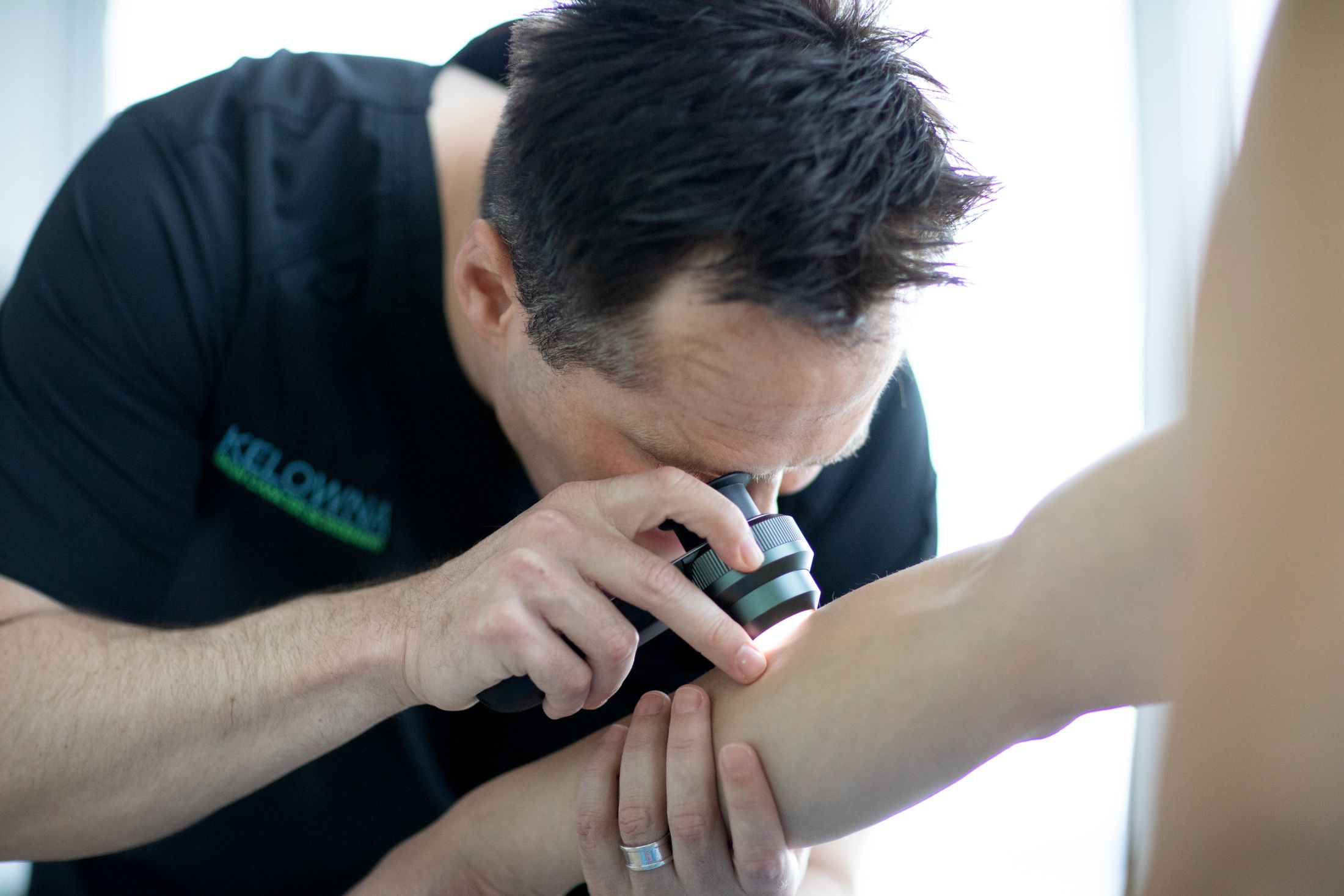You may have heard the medical term, Dermatoscopy, also known as dermoscopy and know that it is used during dermological examinations. Doctors use a stethoscope to examine your heart and a dermatoscope to examine your skin. I wanted to provide an overview of what dermoscopy is, and how it is used. Discover why it dermoscopy is a game changer in skin cancer diagnosis, treatment and skin screening.
To give a basic idea, dermoscopy is a diagnostic technique that can be used to examine the skin and has been proven to help determine the malignancy of skin lesions, more specifically melanoma skin cancer. I always explain to my patients, that dermoscopy is basically a handheld microscope with a very bright light, I use to look at and examine the skin. It is painless, easy and harmless with no side effects like radiation. Every mole, spot, barnacle… literally anything, big or small, on the skin, has specific features or characteristics. These very specific features of skin lesions helps me to “put a puzzle together and see under the superficial layer of the skin”, and make the earliest possible diagnosis of skin cancer. Now, what makes this such a game changer in the skin cancer screening, diagnosis, and treatment realms?
Better detection

When a person is diagnosed with melanoma skin cancer, the patient’s greatest chance of long-term survival is at its highest when it is diagnosed early. As a result, consistent screenings are recommended for early detection, if you are at risk. So, where exactly does dermoscopy come in? It is considered a low-cost technique, and using it significantly improves a physician’s ability to evaluate skin lesions that they may find. With the help of dermoscopy, the physician has a much better understanding of the skin lesion and can make the appropriate decision on whether to move forward with a biopsy. The only challenge can be finding a physician with a minimum of more than 6-12 months of training, not only experience, using a dermatoscope.
Dermoscopy is beneficial for patients in many ways. To begin, a biopsy is a procedure where they remove a piece of the skin in the area to take for further testing. While this may not sound like a big deal for a lesion on your back, an area that is frequently covered, unfortunately, biopsies are often necessary for lesions on areas across the face, which can leave the patient feeling discouraged and scared. With the incredible “new” technology that dermoscopy brings, patients can rest assured knowing that the physicians are making the best decisions.
A superior tool for the long-term
In addition to giving doctors better tools to determine a biopsy, a dermatoscope, the device that is used for the exam, can also take close-up photographs of lesions. Each time a patient visits, they take another photograph and can map any changes over time. This incredible ability allows skin cancer physicians to catch skin cancer earlier, and in turn, could help significantly extend the life of the patient.
Using dermoscopy during a skin cancer screening can not only help improve one’s chances of early detection, but it can also reduce the number of unneeded, biopsies with associated complications. With tools like dermoscopy, we can work together to beat skin cancer for good.




